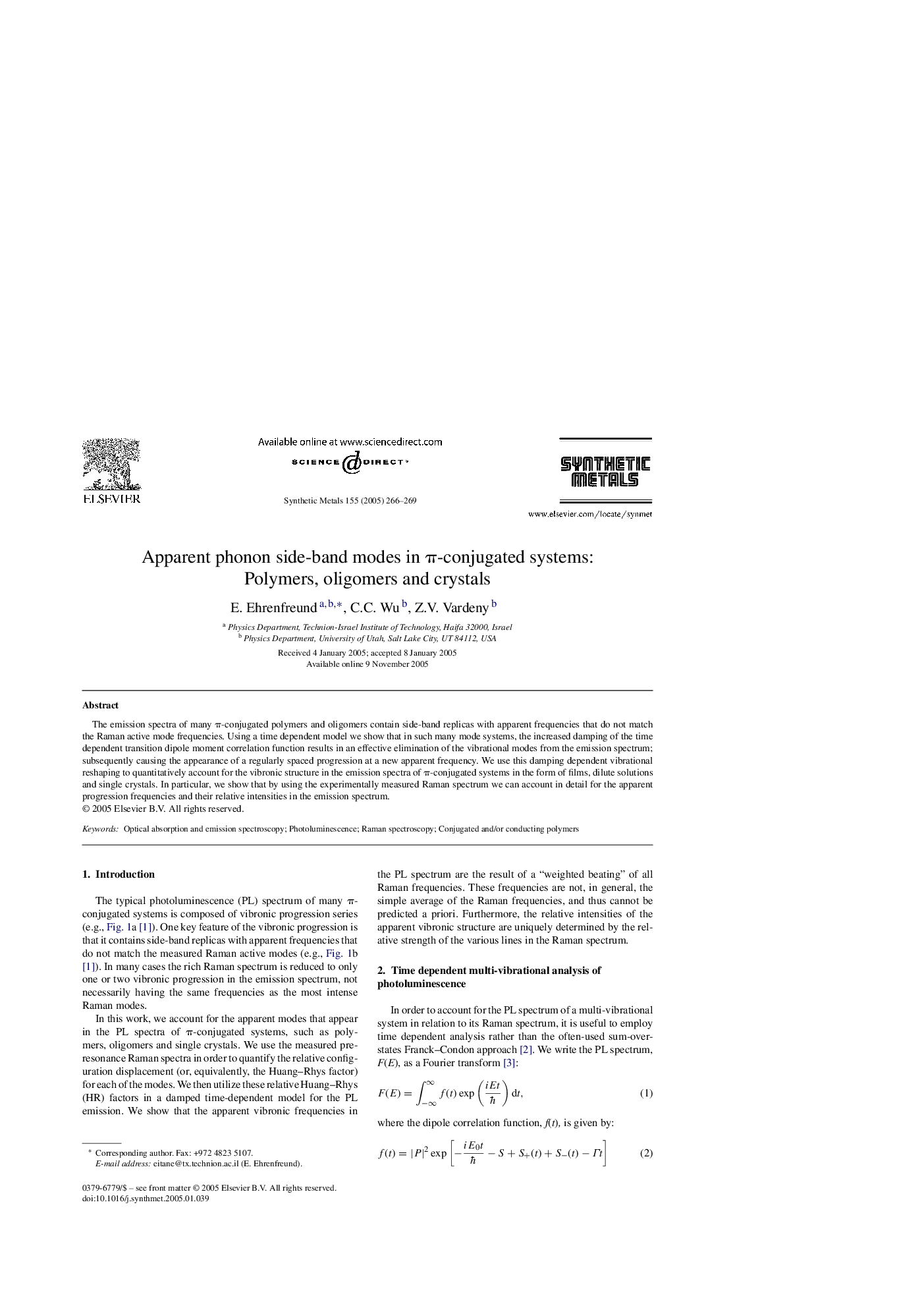| Article ID | Journal | Published Year | Pages | File Type |
|---|---|---|---|---|
| 10618722 | Synthetic Metals | 2005 | 4 Pages |
Abstract
The emission spectra of many Ï-conjugated polymers and oligomers contain side-band replicas with apparent frequencies that do not match the Raman active mode frequencies. Using a time dependent model we show that in such many mode systems, the increased damping of the time dependent transition dipole moment correlation function results in an effective elimination of the vibrational modes from the emission spectrum; subsequently causing the appearance of a regularly spaced progression at a new apparent frequency. We use this damping dependent vibrational reshaping to quantitatively account for the vibronic structure in the emission spectra of Ï-conjugated systems in the form of films, dilute solutions and single crystals. In particular, we show that by using the experimentally measured Raman spectrum we can account in detail for the apparent progression frequencies and their relative intensities in the emission spectrum.
Related Topics
Physical Sciences and Engineering
Materials Science
Biomaterials
Authors
E. Ehrenfreund, C.C. Wu, Z.V. Vardeny,
